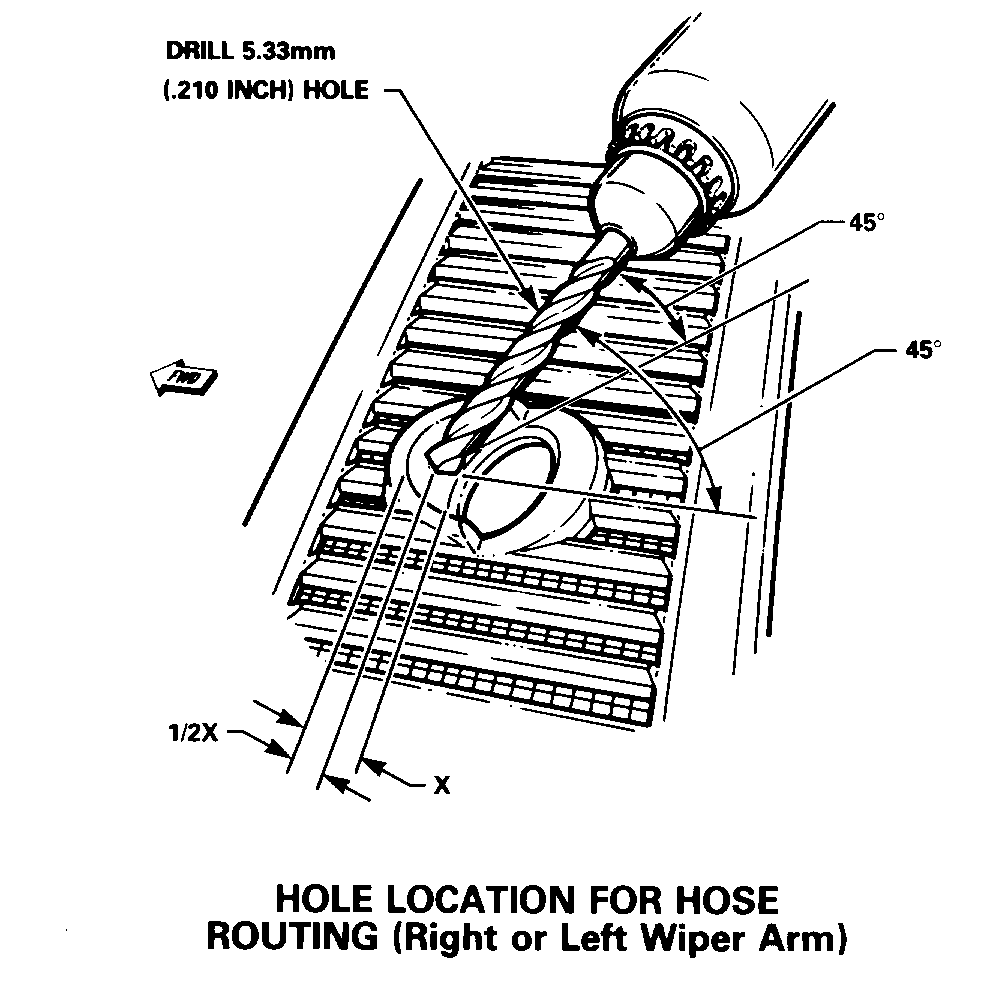WINDSHIELD WASHER HOSE SPRING RUBS THROUGH PAINT ON COWL

WINDSHIELD WASHER HOSE SPRING RUPS THROUGH PAINT ON COWL
MODELS AFFECTED: 1987 6000 STE MODELS
Customer comments on the windshield washer arm rubbing through the paint on the cowl by the anti-chafe spring can be prevented from reoccurring by routing the washer hose as follows:
1. Remove both wiper arms from vehicle and disconnect washer hoses.
2. Remove cowl grill, disconnect the washer fluid hose at the tee, for ease of assembly.
3. Carefully center punch a location for a hole to be drilled in the cowl. The locations are directly in front of the wiper transmission spindle holes, halfway between the forward lip of the holes and forward edge of the depressions in the cowl (See Illustration).
4. Using a .210" drill bit, carefully drill a hole at the marked location (See Illustration).
5. Trim the screen on the underside of the cowl as required.
6. Touch up cowl grill at a drilled hole as required.
7. While paint is drying, remove lower section of hose and spring from wiper arm (disconnect hose at lower nozzle) and discard.
8. Install new hose in each arm, P/N 20562123, or 600 mm long, 2.5 ID x 4.0 O.D. through the arm spring. It may be necessary to remove cover on underside of arm. Do not connect hose to lower nozzle at this time.
9. Feed hose connectors through underside of the hole drilled in cowl. Install cowl by making sure to reconnect washer hose at tee.
10. Reinstall wiper arms on to shafts and connect arm hose to connector at the cowl.
11. With wiper system in park position the section of hose between connector at the cowl and where it enters the arm should be pulled snug against arm head. It is necessary to be certain that this section of the hose rests above the lip on the wiper arm head.
12. With the hose in this position it should be cut to length to connect to the lower nozzle on the arm without any slack and reconnected.
Labor Operation Number: T1327
Labor Time : 0.7 Hours

General Motors bulletins are intended for use by professional technicians, not a "do-it-yourselfer". They are written to inform those technicians of conditions that may occur on some vehicles, or to provide information that could assist in the proper service of a vehicle. Properly trained technicians have the equipment, tools, safety instructions and know-how to do a job properly and safely. If a condition is described, do not assume that the bulletin applies to your vehicle, or that your vehicle will have that condition. See a General Motors dealer servicing your brand of General Motors vehicle for information on whether your vehicle may benefit from the information.
